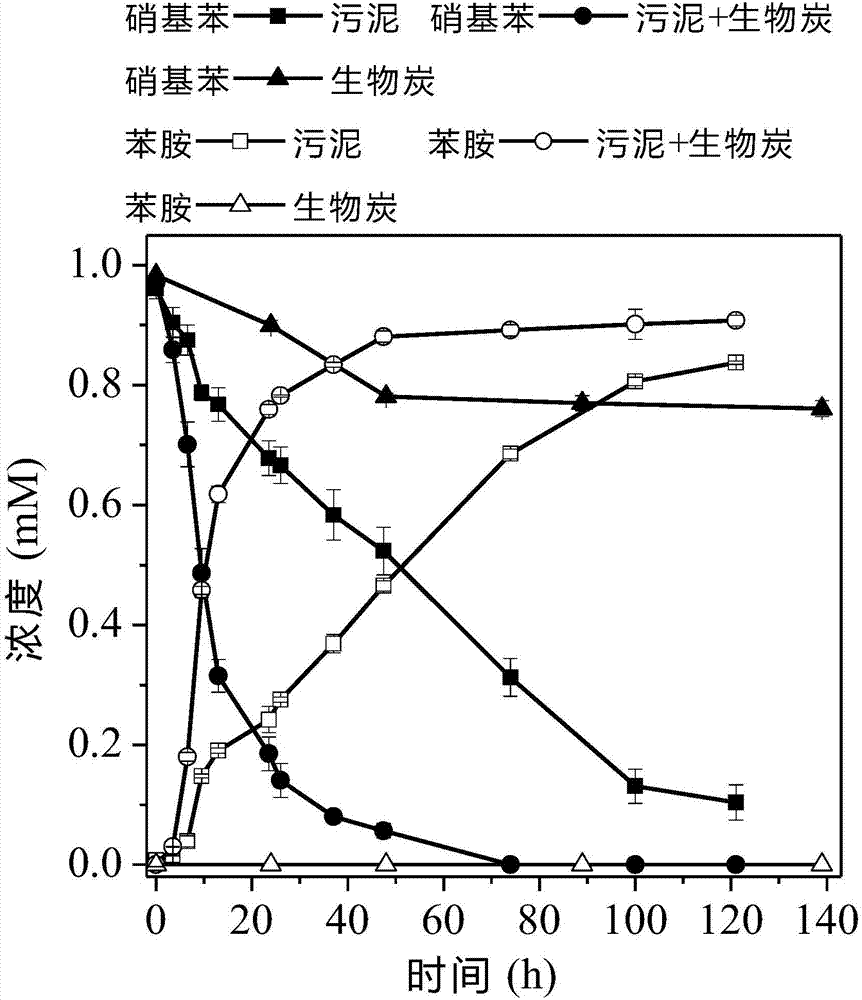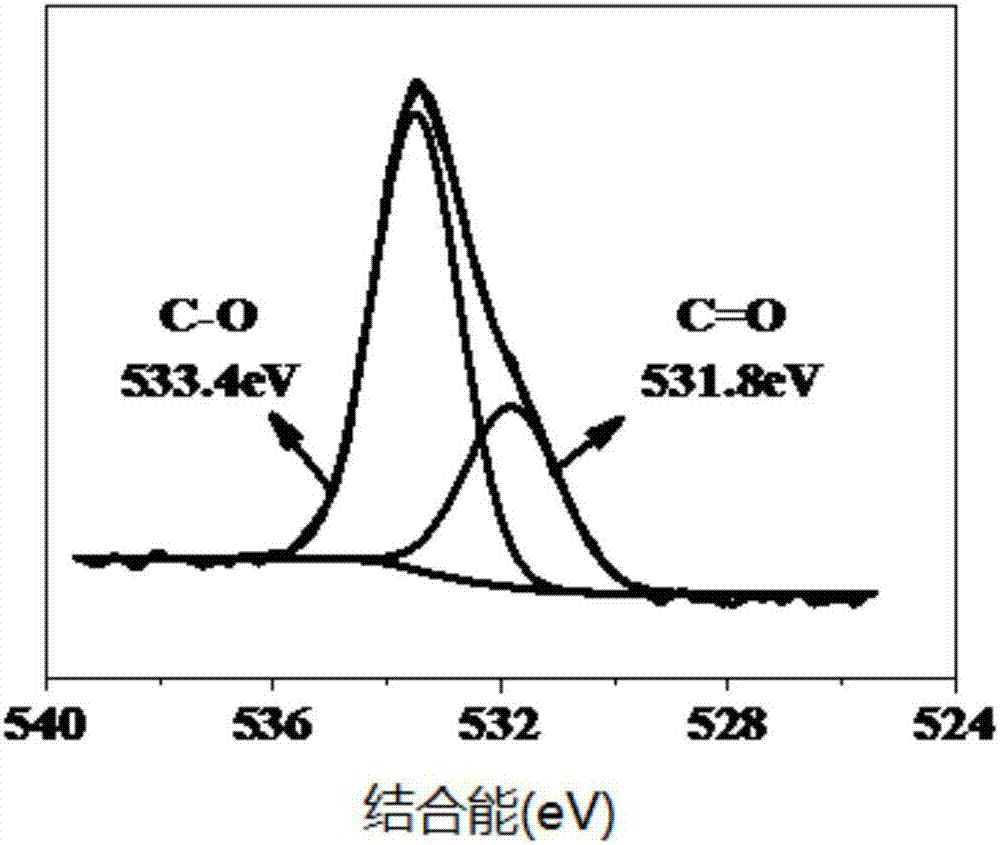Method for performing degradation on pollutant-nitrobenzene-containing water body by using anaerobic mixed bacteria
A technology for nitrobenzene and pollutants, applied in water pollutants, anaerobic digestion treatment, chemical instruments and methods, etc., can solve the problems of high price, biological toxicity, low degradation rate, etc. easy to obtain effect
- Summary
- Abstract
- Description
- Claims
- Application Information
AI Technical Summary
Problems solved by technology
Method used
Image
Examples
Embodiment 1
[0051] The pine wood chips were heated up to 400°C at a rate of 5°C / min in a nitrogen atmosphere, kept at a constant temperature for 3 hours, and then naturally cooled to room temperature (the entire pyrolysis process was carried out in a protective atmosphere), ground and passed through a 100-mesh sieve to obtain biochar .
[0052] The present invention carries out scanning electron microscope analysis to the biochar that makes, see figure 1 , figure 1 Scanning electron micrograph of the biochar prepared in Example 1 of the present invention. Depend on figure 1 The surface morphology of the material can be seen.
[0053] The present invention carries out XPS analysis to biochar, and the results are shown in Table 2, and Table 2 is the O1s spectrogram in the XPS spectrum of the biochar prepared in Example 1 of the present invention, by figure 2 It can be seen that there are different oxygen-containing functional groups on the surface of the biochar material.
[0054] Des...
Embodiment 2
[0061] Take 14 reactors, numbered 1-14 respectively, add materials to the 14 reactors according to Table 2, the concentration of nitrobenzene is 1mmol / L, and the amount of anaerobic sludge is 0.5g; the anaerobic sludge includes green Pseudomonas, Spirulina, Desulfovibrio and Actinomycetes. Electron donors were: no (control), glucose, formate, acetate, propionate, butyrate and hydrogen, respectively. The content of each substance was determined by providing the same COD. The reduction conversion of nitrobenzene under different electron donor conditions was studied, and the degradation rates of nitrobenzene under different electron donor conditions are shown in Table 2:
[0062] Table 2 The degradation rate of nitrobenzene under different electron donor conditions
[0063]
[0064] Table 2 shows that when different electron donors exist, biochar can be used as a catalyst to accelerate the degradation of nitrobenzene in the anaerobic mixed bacteria system. At the same time,...
Embodiment 3
[0066] Take 14 reactors, numbered 1~14 respectively, the concentration of nitrobenzene is 1mmol / L, and the amount of anaerobic sludge is 0.5g; Actinomycetes. The specific conditions and the degradation rate of nitrobenzene are shown in Table 3:
[0067] Table 3 Degradation rate of nitrobenzene under different electron donor conditions
[0068]
[0069] The results in Table 3 show that increasing the concentration of electron donors can accelerate the anaerobic degradation of nitrobenzene.
PUM
| Property | Measurement | Unit |
|---|---|---|
| particle size | aaaaa | aaaaa |
| porosity | aaaaa | aaaaa |
| porosity | aaaaa | aaaaa |
Abstract
Description
Claims
Application Information
 Login to View More
Login to View More - R&D
- Intellectual Property
- Life Sciences
- Materials
- Tech Scout
- Unparalleled Data Quality
- Higher Quality Content
- 60% Fewer Hallucinations
Browse by: Latest US Patents, China's latest patents, Technical Efficacy Thesaurus, Application Domain, Technology Topic, Popular Technical Reports.
© 2025 PatSnap. All rights reserved.Legal|Privacy policy|Modern Slavery Act Transparency Statement|Sitemap|About US| Contact US: help@patsnap.com



